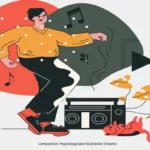
“Whoever looks into the ‘mirror’ of the water, sees above all his own image. He who goes towards himself runs the risk of meeting himself. The mirror does not favor, it faithfully shows the figure that is seen in it, it makes us see that face that we never show to the world because we cover it with the ‘person’, the actor’s mask. But the mirror is behind the mask and shows his true face. That is the first test of courage on the interior path; a test that is enough to scare the majority, since the encounter with oneself is one of the most unpleasant things and man avoids it as long as he can project all the negative onto his surrounding world”, wrote Carl Gustav Jung in “Archetypes and the collective unconscious”.
The word “person” was originally used to refer to the mask worn by stage actors to play different roles, but in Carl Jung’s model of the psyche, the Person occupies a space between our ego and society.
The ego is the center of our consciousness, responsible for our sense of identity throughout life, while the Person is the social mask we put on. We all use different masks depending on the circumstances, since it is our way of adapting to the demands of society, so they play an important role in shaping our social role and in the way we relate to others. However, wearing those masks also carries some dangers.
Who is the Person?
“The Person is that which in reality is not, but which oneself and others believe it to be,” Jung wrote. In other words, it is a construction to adapt to social demands. The Person is the individual’s adaptation system or the way in which he assumes his relationship with the world.
“The person is a complicated system of relations between individual consciousness and society, quite appropriately a kind of mask, designed on the one hand to make a definite impression on the others and on the other to hide the true nature of the individual”, according to Jung.
In Jung’s time, this dichotomy was most apparent for men, who often developed one personality at work and another for the home space, as they were forced to adapt to the demands of two distinctly different environments, each of which also emitted a different set of signals and expectations.
Each vocation or profession, for example, also has a characteristic personality. Society imposes certain types of behavior on them and professionals strive to live up to these expectations by changing the way they relate to each other in the workplace.
Generally, the Person performs discreetly well in these contexts, as long as we are aware that it is only a mask, one of our many facets. The problem begins when we do not make that differentiation and we identify too much with the mask, in which case our growth stops and we can suffer a disintegration of our identity that leads to a state of chaos and disorientation.
In fact, we must bear in mind that we have a tendency to build acceptable traits in the Person and keep hidden or repressed the traits that we consider unacceptable. These undesirable aspects end up taking their toll on us as we mature, forming our shadow, the “dark” side of our personality, by which we can be possessed at any time, in sudden emotional outbursts.
Why do we overidentify with the Person?
The greatest danger of the Person is that we over-identify with its mask, which often occurs when we adapt so much to the demands of society that individuality is virtually suppressed. As Jung wrote, “The danger is that we become identical to our characters.”
Jung considered that the Person feeds on two sources. “According to the social conditions and requirements, the social character is oriented, on the one hand, by the expectations and demands of the society, and on the other, by the social goals and aspirations of the individual,” he pointed out.
On the one hand, the Person is formed as a result of the expectations and demands of the environment, which includes the demands to become a certain type of person, behave appropriately, follow the norms and social customs of the group or even believe in a certain vision of nature and reality, like religions.
On the other hand, it also feeds on our social ambitions. For society to influence our attitudes, decisions and behaviors, we must want to belong to that society, to be accepted by it. In other words, the ego must be motivated to accept the demands, embody the roles assigned to it, and comply with the rules. That means that the Person is a kind of tacit agreement between society and the individual.
In fact, Jung realized that the more prestigious the social role we play, the stronger our tendency to identify with that mask. That identification does not depend solely on social pressure, but on our ambitions and aspirations.
For example, a person who plays a role of high collective value and enormous prestige that brings him fame, honor, and high social visibility, will be more likely to merge with that role, to the point of disappearing under that mask. Jung thought that this conflict in the ego between individuation and separation generates a great deal of our anxiety.
Coexist with or annihilate the Person?
The Person prevents us from what Jung considered the most important task in life: the individuation process, getting closer to Being by becoming aware of our unconscious contents. “One can’t individuate himself as long as he’s playing a role for himself,” he warned. How can we be free, unique and authentic if we conform to the rules, desires and needs of others to receive approval?
The answer does not lie in coming out of the mask, according to Carl Jung, because in reality a functional Person is part of ourselves and is connected to our essence. In reality, the Person acts as a necessary “counterweight” for the soul/animus relationship with the inner world. Just as the soul/animus are the bridge to the unconscious, the Person is our bridge to the outside world.
In fact, if you think you don’t need a Person, you are most likely subconsciously identifying with your Person or grossly underestimating the effect of the external world. The Person is necessary to move in society. If we want to live with the others, we must adopt attitudes that are functional and adaptive according to the context. It’s not a bad thing. The Person allows us to clarify our roles to the others and, to some extent, preserve our privacy.
For Jung, everything goes through the acceptance of our shadows, a process that lasts a lifetime and is part of our personal growth, since it is what allows us to be honest about who we are and recover those qualities that lie latent in our psyche, since although the shadow is often perceived as negative, it also has its positive side. It becomes hostile only when ignored or misunderstood.
“The encounter with oneself means first of all the encounter with one’s own shadow. It is true that the shadow is a narrow passage, a narrow door, whose painful narrowness no one who descends to the deep source can avoid. However, one must get to know oneself to know who one is”, warned Jung.
Being aware of and accepting our shadows disempowers the Person, so we begin to see it simply for what it is: a functional mask in certain situations. In this way we manage to “get out of the mask” but, at the same time, use it when necessary.
Source:
Jung, C. G. (2009) Arquetipos e inconsciente colectivo. Barcelona: Paidós Ibérica.



